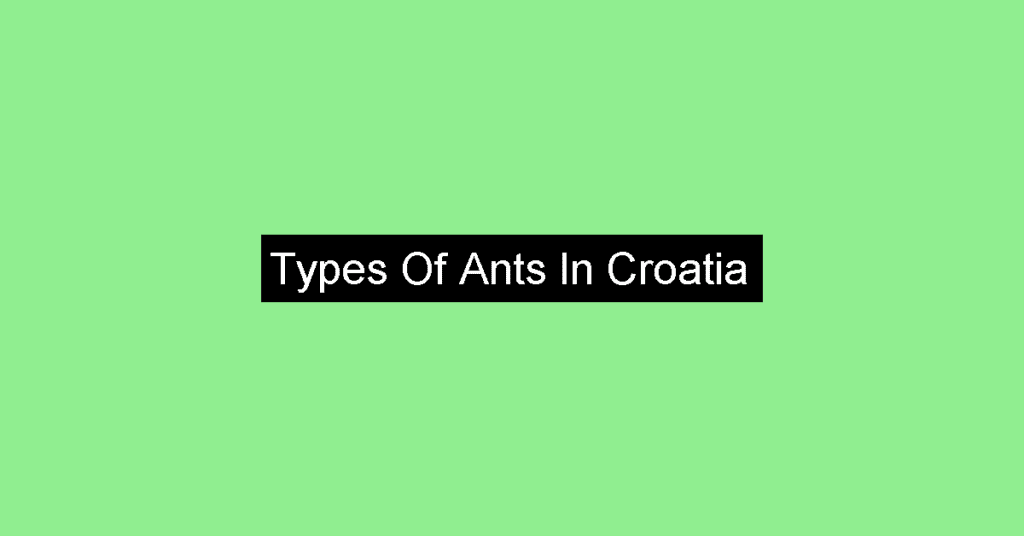Croatia, located in Southeast Europe, is a country known for its stunning natural beauty and diverse wildlife. The country is bordered by the Adriatic Sea to the west and shares its borders with Slovenia, Hungary, Serbia, Bosnia and Herzegovina, and Montenegro.
The climate in Croatia varies from region to region, with the coastal areas experiencing a Mediterranean climate, while the inland regions have a continental climate. The country is home to a variety of animals, including brown bears, wolves, lynx, and chamois, as well as a rich variety of bird species.
The environment in Croatia is characterized by its rugged coastline, crystal-clear waters, and lush forests, making it a popular destination for nature lovers and outdoor enthusiasts. .
Types Of Ants In Croatia
The Types Of Ants In Croatia are listed here: Coccid-Tending Ants, Alloformica, Anergates, Funnel Ants, Bothriomyrmex, Carpenter And Sugar Ants, Sneaking Ants, Marauder Ants, Sahara Ants, Acrobat Ants, Cryptic Ants, Dolly Ants, Wood Ants, Formicoxenus, Harpagoxenus, Crypt Ants, Moisture Ants, Lepisiota, Leptanilla, Leptothorax, Linepithema, Velvety Tree Ants, Manica, Harvester Ants, Trailing Pharaoh And Timid Ants, Mite-Eating Ants, Furrowed Ants, Myrmoxenus, Oxyopomyrmex, Crazy Ants, Big Headed Ants, Restless Ants, Amazon Ants, Porthole Ants, Winter Ants, Hairy Curltail Ants, Proformica, Rossomyrmex, Fire Ants, Leaf-Litter Ants, Vampire Ants, Strongylognathus, Tapinoma, Teleutomyrmex, Slave-Making Ants, Pavement Ants, Cornfield Ants, Furrowed Ants.
If you’ve found some other ants in this region, contact us, and we will add them to the list!
1) Coccid-Tending Ants, Acropyga
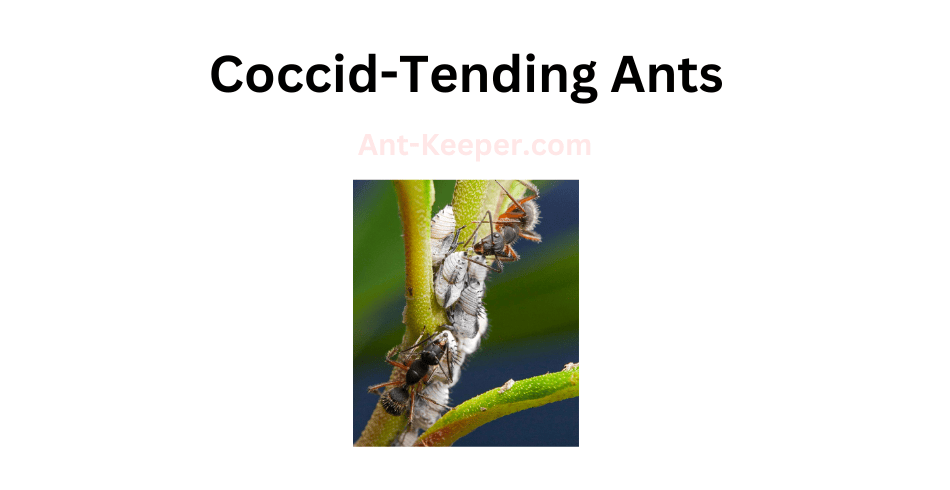
Coccid-tending ants are a group of ants that have a mutualistic relationship with coccids, also known as scale insects.
These ants protect and care for the coccids, which in turn provide the ants with a sugary substance called honeydew.
Coccid-tending ants are typically small in size, ranging from 2 to 5 millimeters in length.
They have a reddish-brown coloration and a slender body shape.
These ants are commonly found in forests and grasslands, where they build nests in soil or under rocks.
The relationship between coccid-tending ants and coccids is a classic example of mutualism.
The ants protect the coccids from predators and parasites, and also move them to new feeding sites when necessary.
In return, the coccids secrete honeydew, which the ants consume as a source of energy.
Coccid-tending ants have been observed to actively farm and cultivate coccids, moving them to new locations and even pruning the plants on which they feed to encourage the growth of new coccids.
This behavior has been shown to increase the overall productivity of the ant-coccid mutualism.
Overall, coccid-tending ants are an important component of many ecosystems, playing a key role in the maintenance of plant and insect populations.
Their mutualistic relationship with coccids highlights the complex and interconnected nature of ecological systems.
2) Alloformica
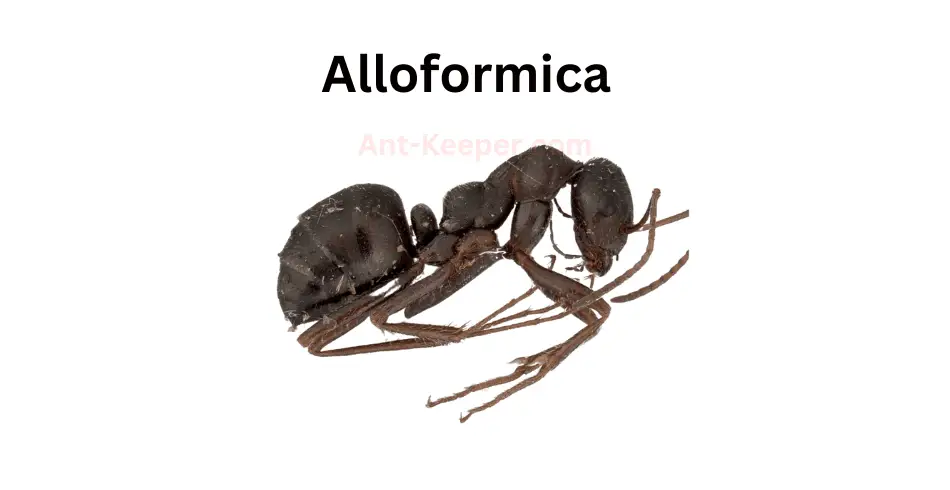
Alloformicabe is a species of ant that belongs to the Formicidae family.
These ants are known for their unique physical characteristics and behavior.
They have a dark brown or black coloration and are relatively small in size, measuring around 2-3 mm in length.
One of the most distinctive features of Alloformicabe ants is their ability to change their body shape and size depending on the task at hand.
This is known as polymorphism and is a common trait among ants.
Alloformicabe ants have workers that are divided into two categories: minor workers and major workers.
Minor workers are smaller in size and are responsible for tasks such as foraging and caring for the brood.
Major workers, on the other hand, are larger in size and are responsible for tasks such as nest building and defense.
Alloformicabe ants are also known for their aggressive behavior.
They are highly territorial and will defend their nests fiercely against intruders.
When threatened, they will swarm their enemies and use their powerful mandibles to bite and sting.
Despite their aggressive nature, Alloformicabe ants are also important members of their ecosystem.
They play a crucial role in seed dispersal and soil aeration, and are also important predators of other insects.
Overall, Alloformicabe ants are fascinating creatures that have adapted to their environment in unique ways.
Their ability to change their body shape and size, as well as their aggressive behavior, make them a fascinating subject of study for scientists and nature enthusiasts alike.
3) Anergates

Anergates is a genus of ants that belongs to the subfamily Myrmicinae.
The genus is known for its unique social structure, where the colonies are composed of a single queen and a few dozen workers.
The workers of Anergates are specialized in brood care and nest maintenance, and they do not forage for food like most other ant species.
Anergates ants are small in size, with workers measuring around 2-3 mm in length.
They are typically reddish-brown in color and have a slender body shape.
The ants are known to inhabit a variety of habitats, including forests, grasslands, and wetlands.
One of the most interesting aspects of Anergates ants is their reproductive strategy.
Unlike most ants, where the queen produces both male and female offspring, Anergates queens only produce male offspring.
These males then mate with females from other ant species, and the resulting hybrid offspring become the queens of the new colonies.
Anergates ants are also known for their ability to form symbiotic relationships with other ant species.
They often share their nests with other ant species, and the two species work together to maintain the nest and care for the brood.
Overall, Anergates ants are a fascinating group of ants with unique social structures and reproductive strategies.
Their ability to form symbiotic relationships with other ant species further highlights the complexity and diversity of the ant world.
4) Funnel Ants, Aphaenogaster

The Funnel Ants, also known as Aphaenogaster ants, are a species of ants that are commonly found in various habitats around the world.
These ants are known for their unique nesting behavior, where they construct funnel-shaped nests that are typically located in soil or leaf litter.
The Funnel Ants are relatively small in size, with workers measuring between 3-5mm in length.
They are typically reddish-brown in color and have a slender body shape.
These ants are known for their strong mandibles, which they use to collect and transport food back to their nests.
One of the most interesting aspects of the Funnel Ants is their nesting behavior.
These ants construct funnel-shaped nests that are typically located in soil or leaf litter.
The entrance to the nest is narrow and funnel-shaped, which helps to protect the colony from predators and other threats.
Inside the nest, the ants create a series of chambers and tunnels that are used for different purposes, such as storing food, caring for the brood, and housing the queen.
The Funnel Ants are omnivorous, meaning that they feed on both plant and animal matter.
They are known to collect a wide variety of food items, including seeds, insects, and other small invertebrates.
These ants are also known to tend to aphids, which they use for their honeydew secretion.
Overall, the Funnel Ants are a fascinating species of ants that are known for their unique nesting behavior and omnivorous diet.
They play an important role in their ecosystems, helping to control populations of other insects and contributing to nutrient cycling in the soil.
5) Bothriomyrmex
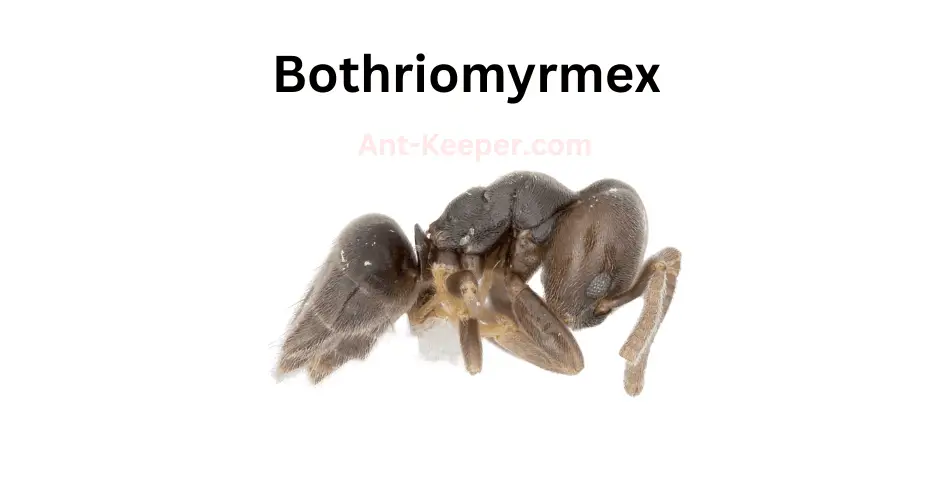
Bothriomyrmex is a genus of ants that belongs to the family Formicidae.
The ants in this genus are small in size, measuring between 2-4 mm in length.
They are known for their distinctive appearance, with a narrow waist and a long, curved spine on their thorax.
Bothriomyrmex ants are typically found in tropical and subtropical regions, where they live in colonies that can range in size from a few dozen to several hundred individuals.
They are known for their aggressive behavior and will defend their nests fiercely against intruders.
These ants are omnivorous, feeding on a variety of foods including insects, nectar, and plant sap.
They are also known to tend to aphids and other insects that produce honeydew, which they collect and consume.
Bothriomyrmex ants are important members of their ecosystems, playing a role in seed dispersal and soil aeration.
They are also preyed upon by a variety of predators, including birds, reptiles, and other insects.
Overall, Bothriomyrmex ants are fascinating creatures that play an important role in the ecosystems where they live.
Their unique appearance and behavior make them a subject of interest for scientists and nature enthusiasts alike.
6) Carpenter And Sugar Ants, Camponotus

Carpenter ants and sugar ants are two common species of ants found in many regions of the world.
Carpenter ants are known for their ability to excavate wood and create nests within it.
They are typically larger in size than sugar ants and have a black or dark brown coloration.
Carpenter ants are also known for their strong mandibles, which they use to chew through wood and other materials.
Sugar ants, on the other hand, are smaller in size and have a yellow or brown coloration.
They are named for their preference for sugary foods and are often found in kitchens and other areas where food is stored.
Sugar ants are also known for their ability to form large colonies, with thousands of individual ants working together to gather food and care for their young.
Both carpenter ants and sugar ants play important roles in their ecosystems.
Carpenter ants help to break down dead wood and other plant material, which helps to recycle nutrients back into the soil.
Sugar ants help to disperse seeds and pollinate plants, which helps to maintain healthy ecosystems.
However, both species can also be pests when they invade human homes and buildings.
Carpenter ants can cause damage to wooden structures, while sugar ants can contaminate food and be a nuisance to homeowners.
It is important to take steps to prevent ant infestations and to control them if they do occur, in order to protect both human health and the health of the environment.
7) Sneaking Ants, Cardiocondyla

Sneaking Ants, also known as Camponotus obscuripes, are a species of ant that are commonly found in forested areas.
These ants are known for their ability to move quietly and quickly, making them difficult to detect.
Sneaking Ants are typically black or dark brown in color and range in size from 5 to 12 millimeters in length.
They have a distinctive, flattened head and a narrow waist, which helps them to navigate through tight spaces.
One of the most interesting aspects of Sneaking Ants is their behavior.
These ants are known for their ability to sneak up on other insects and steal their food.
They are also known to raid the nests of other ant species, taking their eggs and larvae back to their own colony to raise as their own.
Sneaking Ants are omnivorous, meaning they eat both plant and animal matter.
They have been observed feeding on nectar, honeydew, and small insects.
They are also known to scavenge for food, often taking advantage of the leftovers from other insects.
In terms of reproduction, Sneaking Ants have a unique system.
The colony is typically led by a single queen, who is responsible for laying eggs.
However, there are also a number of worker ants who are capable of laying eggs as well.
These eggs are typically unfertilized and produce male ants, which are used for mating purposes.
Overall, Sneaking Ants are a fascinating species with unique behaviors and adaptations.
Their ability to move quietly and quickly makes them a formidable predator, and their omnivorous diet allows them to thrive in a variety of environments.
8) Marauder Ants, Carebara

Marauder ants are a species of ants known for their aggressive behavior and large colony sizes.
They are typically found in tropical and subtropical regions, where they inhabit a variety of habitats including forests, grasslands, and urban areas.
These ants are known for their ability to raid other ant colonies and steal their resources, including food and brood.
They have powerful mandibles that allow them to overpower other ants and carry their prey back to their own colony.
Marauder ants are also known for their ability to adapt to changing environments.
They can quickly adjust their foraging patterns and nesting sites in response to changes in their surroundings, allowing them to thrive in a variety of habitats.
Despite their aggressive behavior, marauder ants play an important role in their ecosystems.
They help to control populations of other insects and contribute to nutrient cycling in the soil.
Overall, marauder ants are a fascinating species of ants that have adapted to thrive in a variety of environments.
Their aggressive behavior and large colony sizes make them a formidable force in the ant world.
9) Sahara Ants, Cataglyphis
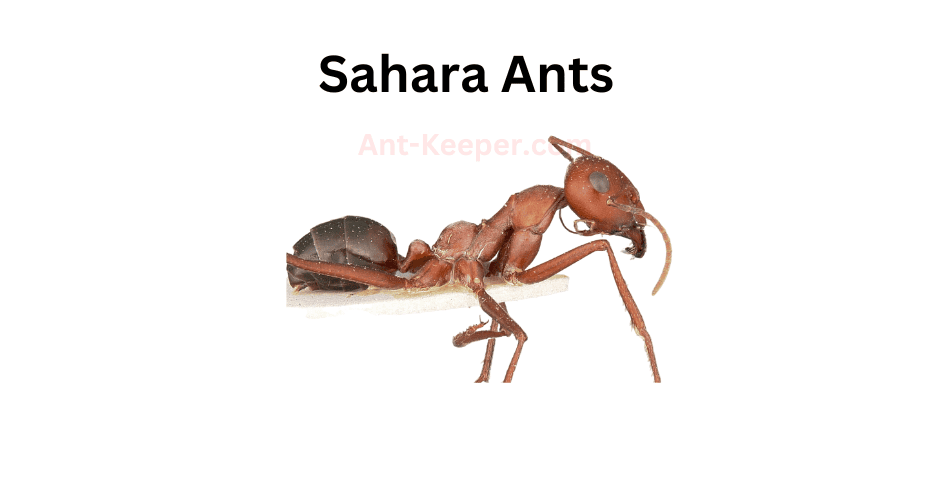
The Sahara Ant, also known as Cataglyphis bicolor, is a species of ant that is found in arid regions.
These ants are known for their remarkable ability to navigate through the harsh desert environment, using the sun's position and polarized light to find their way back to their nests.
Sahara Ants are small in size, measuring only a few millimeters in length.
They have a reddish-brown coloration and are covered in fine hairs that help them to retain moisture in the dry desert environment.
These ants are also known for their long legs, which allow them to move quickly across the sand.
One of the most interesting features of the Sahara Ant is its ability to withstand extreme temperatures.
These ants are able to survive in temperatures that can reach up to 70°C (158°F) by regulating their body temperature and behavior.
They will often move in and out of the shade to avoid overheating and will also reduce their activity during the hottest parts of the day.
Sahara Ants are also known for their unique foraging behavior.
They will often travel long distances from their nest in search of food, sometimes covering up to 50 meters in a single trip.
These ants are able to carry food that is up to three times their own body weight, using their strong mandibles to grip and transport the food back to their nest.
Overall, the Sahara Ant is a fascinating species that has adapted to survive in one of the harshest environments on Earth.
Their ability to navigate, withstand extreme temperatures, and forage for food make them a remarkable example of the resilience and adaptability of nature.
10) Acrobat Ants, Crematogaster

Acrobat ants, also known as Crematogaster spp., are a genus of ants that are found in various parts of the world.
These ants are known for their unique ability to contort their bodies and move in acrobatic ways, hence their name.
Acrobat ants are relatively small, with workers measuring between 2-5mm in length.
They are typically brown or black in color, with a slender body and long legs.
These ants are known for their aggressive behavior and will readily defend their nests against intruders.
One of the most interesting features of acrobat ants is their ability to use their mandibles to grip onto surfaces and contort their bodies in unusual ways.
This allows them to move along narrow branches, twigs, and other surfaces that would be difficult for other ants to navigate.
They are also able to use this ability to escape from predators, such as birds and other insects.
Acrobat ants are omnivorous, meaning that they will eat both plant and animal matter.
They are known to feed on insects, nectar, and honeydew, as well as fruits and seeds.
These ants are also known to tend to aphids, protecting them from predators in exchange for the sweet honeydew that the aphids produce.
In terms of their social structure, acrobat ants are typically organized into colonies that are led by a queen.
The queen is responsible for laying eggs, while the workers are responsible for foraging, caring for the young, and defending the nest.
Overall, acrobat ants are fascinating creatures that have adapted unique abilities to survive in their environments.
Their acrobatic abilities and aggressive behavior make them a formidable force in the insect world.
11) Cryptic Ants, Cryptopone
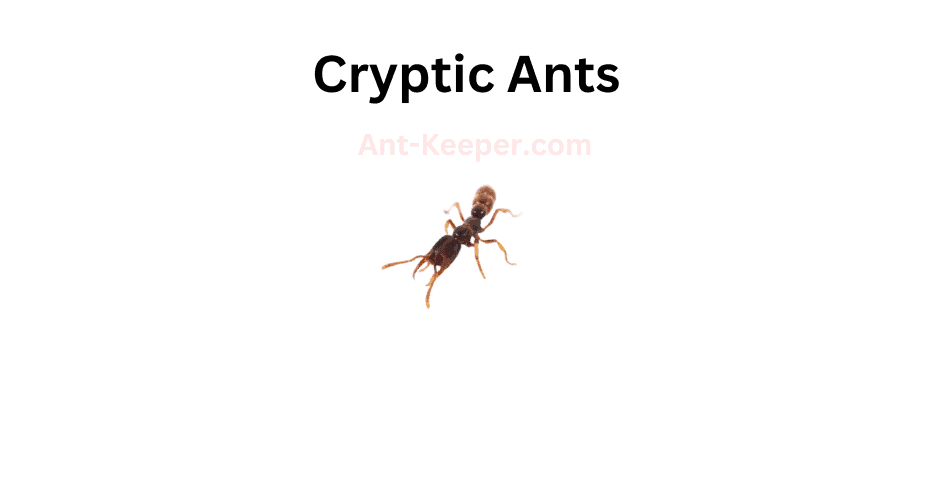
Cryptic ants are a species of ants that are known for their ability to blend in with their surroundings.
They are typically small in size, measuring only a few millimeters in length, and have a dark brown or black coloration that helps them to remain inconspicuous.
One of the most interesting features of cryptic ants is their ability to mimic the appearance of other insects.
For example, some species of cryptic ants have been observed mimicking the appearance of spiders, which helps them to avoid detection by predators that might otherwise prey on them.
Cryptic ants are also known for their highly social behavior.
They live in large colonies that can contain thousands of individuals, and they work together to gather food, care for their young, and defend their territory from other ants and predators.
Despite their small size, cryptic ants play an important role in their ecosystem.
They help to aerate the soil, control pest populations, and provide food for other animals.
In addition, they are an important food source for many birds and other predators.
Overall, cryptic ants are a fascinating species of ants that have evolved a number of unique adaptations to help them survive in their environment.
Their ability to blend in with their surroundings and mimic other insects is just one example of the many ways in which they have adapted to their surroundings over time.
12) Dolly Ants, Dolichoderus

Dolly Ants, also known as Dolichoderus spp., are a species of ant that belong to the family Formicidae.
These ants are known for their distinctive elongated heads and bodies, which give them a unique appearance compared to other ant species.
Dolly Ants are typically found in forested areas, where they build their nests in soil or under rocks.
They are known to be highly social insects, living in large colonies that can contain thousands of individuals.
Within these colonies, there is a strict division of labor, with different ants taking on specific roles such as foraging, caring for the young, and defending the colony.
One interesting aspect of Dolly Ant behavior is their use of chemical communication.
These ants use pheromones to communicate with each other, leaving trails of scent that other ants can follow to locate food sources or to find their way back to the nest.
They also use pheromones to signal danger, which can trigger a coordinated response from the colony to defend against predators.
Dolly Ants are omnivorous, feeding on a variety of foods including insects, nectar, and plant sap.
They are also known to have a mutualistic relationship with certain plant species, where they protect the plants from herbivores in exchange for a source of food.
Overall, Dolly Ants are a fascinating species of ant with unique physical and behavioral characteristics.
Their social structure and use of chemical communication make them an important subject of study for researchers interested in understanding the behavior of social insects.
13) Wood Ants, Formica

Wood ants, also known as carpenter ants, are a species of ant that belong to the genus Camponotus.
They are widely distributed throughout the world and are commonly found in forests and woodlands.
These ants are known for their ability to excavate wood and create nests inside trees, logs, and other wooden structures.
Wood ants are typically large in size, with workers ranging from 6 to 13 millimeters in length.
They are usually black or brown in color and have a smooth, shiny exoskeleton.
These ants have strong mandibles that they use to chew through wood and defend their nests.
Wood ants are social insects that live in colonies consisting of a queen, workers, and soldiers.
The queen is responsible for laying eggs, while the workers and soldiers are responsible for maintaining the nest and protecting it from predators.
These ants communicate with each other using chemical signals called pheromones.
Wood ants are omnivores and feed on a variety of food sources, including insects, honeydew, and plant sap.
They are also known to scavenge for food and will sometimes raid the nests of other ant species.
Despite their ability to excavate wood, wood ants are not considered pests.
In fact, they play an important role in forest ecosystems by helping to decompose dead wood and recycle nutrients.
They also serve as a food source for many other animals, including birds, mammals, and other insects.
Overall, wood ants are fascinating creatures that have adapted to live in a unique habitat.
Their ability to excavate wood and create nests inside trees is a testament to their ingenuity and resourcefulness.
14) Formicoxenus

Formicoxenus is a genus of ants belonging to the subfamily Myrmicinae.
The ants in this genus are small in size, measuring between 1.5 to 3 millimeters in length.
They are known for their distinctive morphology, which includes a narrow waist and a large head with long mandibles.
Formicoxenus ants are typically found in forested areas, where they live in small colonies under rocks, logs, or in leaf litter.
They are known to be highly specialized, with each species having a specific host ant species that they parasitize.
The Formicoxenus ants are social parasites, meaning that they rely on their host ants for food and shelter.
The reproductive strategy of Formicoxenus ants is unique.
The queen ant will infiltrate the host colony and kill the resident queen.
She will then lay her eggs in the host colony, which will be raised by the host workers.
The Formicoxenus larvae will then feed on the host ant larvae and pupae, ensuring their survival.
Formicoxenus ants are important members of forest ecosystems, as they play a role in controlling the population of their host ants.
They are also important indicators of forest health, as their presence can indicate the presence of healthy forest ecosystems.
15) Harpagoxenus
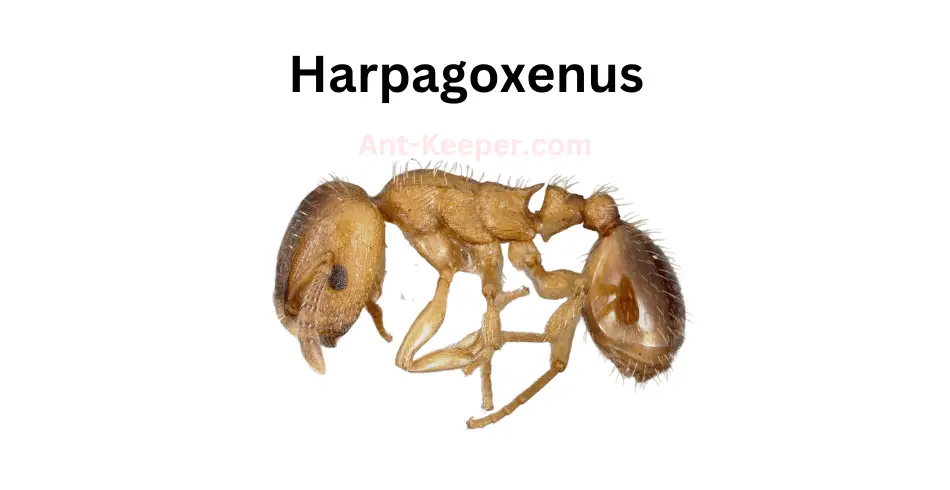
Harpagoxenus is a genus of ants belonging to the subfamily Myrmicinae.
The species Harpagoxenus can be identified by its small size, measuring only a few millimeters in length.
They have a dark brown to black coloration and a slender body shape.
Harpagoxenus ants are known for their unique social behavior.
They are considered to be social parasites, meaning they rely on other ant species to raise their young.
Harpagoxenus queens will invade the nests of other ant species and lay their eggs among the host colony's brood.
The Harpagoxenus larvae will then be fed and cared for by the host workers until they reach adulthood.
Once the Harpagoxenus workers emerge, they will begin to take over the host colony.
They will kill the host queen and force the remaining workers to care for their young.
The Harpagoxenus workers will also take over the food resources of the host colony, ensuring their own survival.
Harpagoxenus ants are found in a variety of habitats, including forests, grasslands, and deserts.
They are most commonly found in areas with high ant diversity, as they rely on other ant species for their survival.
Overall, Harpagoxenus ants are fascinating creatures with unique social behavior.
Their reliance on other ant species for survival makes them an important part of the ecosystem and highlights the complex interactions between different species in nature.
16) Crypt Ants, Hypoponera

Crypt ants, also known as fungus-growing ants, are a group of ants that cultivate fungi for food.
They are found in various habitats, including forests, grasslands, and deserts.
Crypt ants are known for their unique nesting behavior, as they construct underground chambers to house their fungal gardens.
These ants have a symbiotic relationship with the fungi they cultivate.
The ants provide the fungi with a suitable environment for growth, while the fungi provide the ants with a source of food.
The ants also protect their fungal gardens from other insects and parasites.
Crypt ants are social insects, living in colonies that can range from a few dozen to several thousand individuals.
The colonies are organized into castes, with the queen being the largest and most important member.
The queen is responsible for laying eggs, while the workers are responsible for tending to the fungal gardens and caring for the young.
One interesting aspect of crypt ants is their ability to create "satellite" nests.
These nests are smaller chambers located near the main nest, and they serve as storage areas for food and as a place for the queen to lay eggs.
The satellite nests are connected to the main nest by underground tunnels, allowing the ants to move between them.
Overall, crypt ants are fascinating insects that have developed a unique way of obtaining food.
Their symbiotic relationship with fungi and their complex nesting behavior make them an important species to study in the field of entomology.
17) Moisture Ants, Lasius
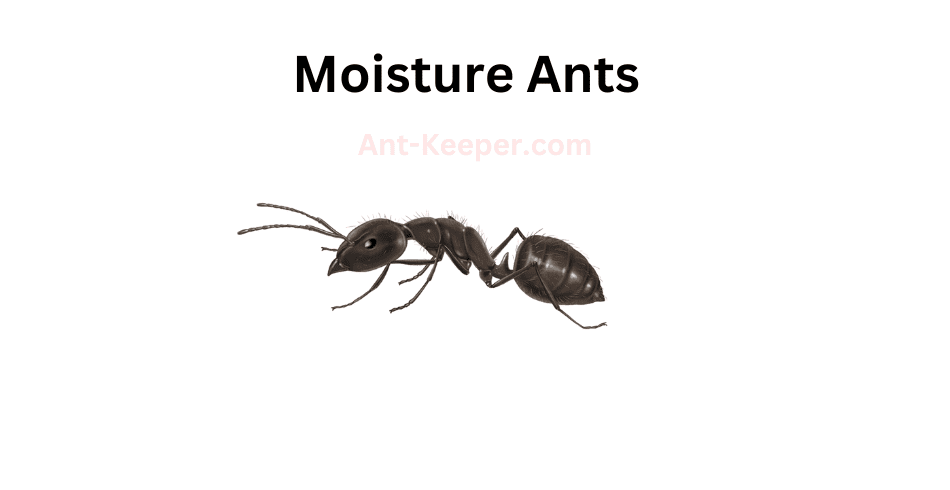
Moisture ants are a type of ant that is commonly found in damp environments.
They are known for their ability to thrive in areas with high levels of moisture, such as in rotting wood or in soil that is constantly moist.
These ants are typically small in size, measuring only a few millimeters in length, and are usually yellow or brown in color.
Moisture ants are social insects that live in colonies, with each colony consisting of a queen, workers, and soldiers.
The queen is responsible for laying eggs, while the workers and soldiers are responsible for maintaining the colony and protecting it from predators.
One of the unique characteristics of moisture ants is their ability to create satellite colonies.
These colonies are established in nearby locations and are connected to the main colony by a network of tunnels.
This allows the ants to expand their territory and increase their chances of survival.
Moisture ants are also known for their ability to control the moisture levels in their environment.
They do this by building intricate nests that are designed to regulate the humidity levels inside.
This is important for the survival of the colony, as too much moisture can lead to the growth of harmful fungi and bacteria.
Overall, moisture ants are fascinating creatures that have adapted to thrive in environments that would be inhospitable to many other species.
Their ability to control moisture levels and create satellite colonies makes them a formidable force in their ecosystem.
18) Lepisiota
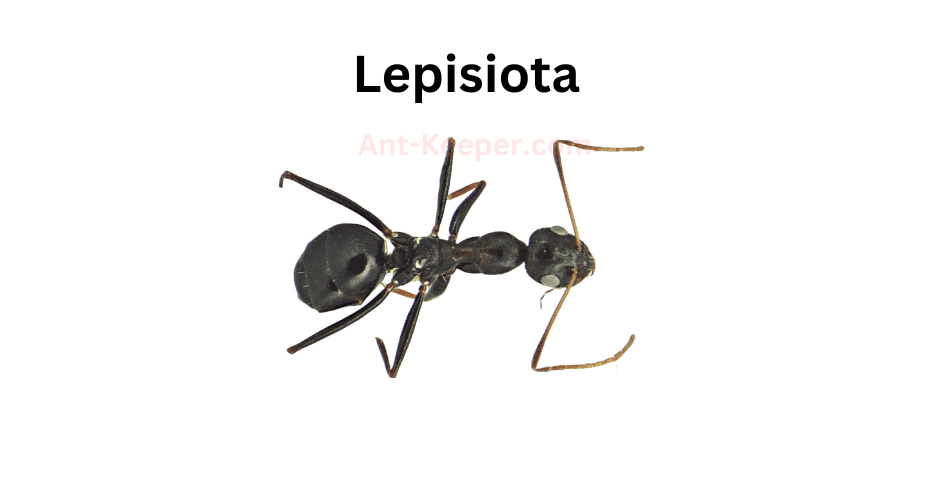
Lepisiota bidentata is a species of ant that belongs to the family Formicidae.
These ants are small in size, measuring only about 2-3 mm in length.
They are typically reddish-brown in color and have a slender body shape.
Lepisiota bidentata ants are known for their aggressive behavior towards other ant species.
They are often found in large colonies and are known to be highly territorial.
These ants are also known to be opportunistic feeders, consuming a wide variety of food sources including insects, seeds, and nectar.
One unique characteristic of Lepisiota bidentata ants is their ability to form satellite colonies.
These satellite colonies are smaller colonies that are established near the main colony and are connected by trails.
This allows the ants to expand their territory and increase their food sources.
Lepisiota bidentata ants are also known for their ability to adapt to different environments.
They are commonly found in urban areas, agricultural fields, and natural habitats.
This adaptability has allowed them to become a successful invasive species in some areas.
Overall, Lepisiota bidentata ants are a fascinating species with unique characteristics and behaviors.
Their aggressive nature and adaptability make them an important species to study in the field of entomology.
19) Leptanilla
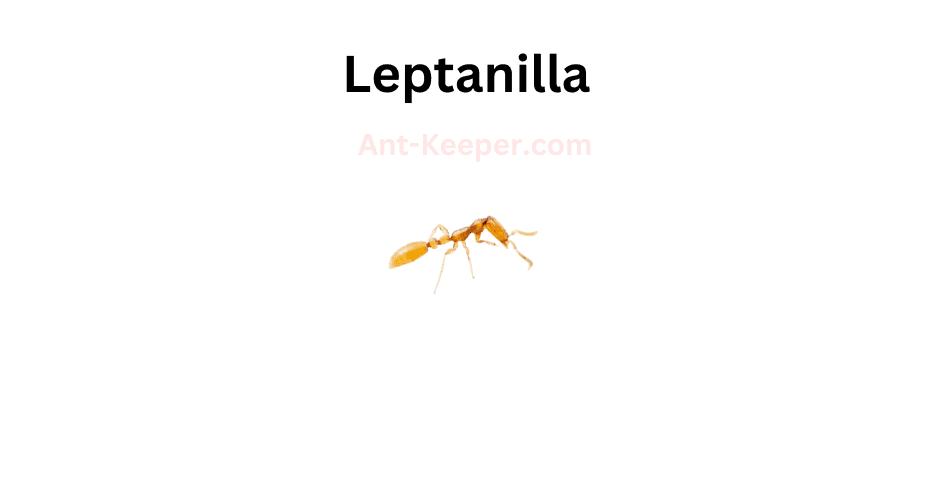
Leptanilla is a genus of ants that belongs to the subfamily Leptanillinae.
These ants are known for their small size and subterranean lifestyle.
They are typically found in tropical and subtropical regions, where they live in soil and leaf litter.
Leptanilla ants are unique in their morphology, with elongated bodies and long, slender legs.
They have small eyes and lack the ability to sting, relying instead on their powerful mandibles to defend themselves.
These ants are also known for their unusual behavior, with some species exhibiting a caste system where workers are divided into "major" and "minor" forms.
Despite their small size, Leptanilla ants play an important role in their ecosystems.
They are known to feed on small invertebrates and help to aerate soil through their burrowing activities.
Some species have also been observed engaging in mutualistic relationships with other insects, such as termites and beetles.
Due to their subterranean lifestyle, Leptanilla ants are not often encountered by humans.
However, they are of interest to researchers studying the evolution and behavior of social insects.
Their unique morphology and behavior make them a fascinating subject for scientific study.
20) Leptothorax
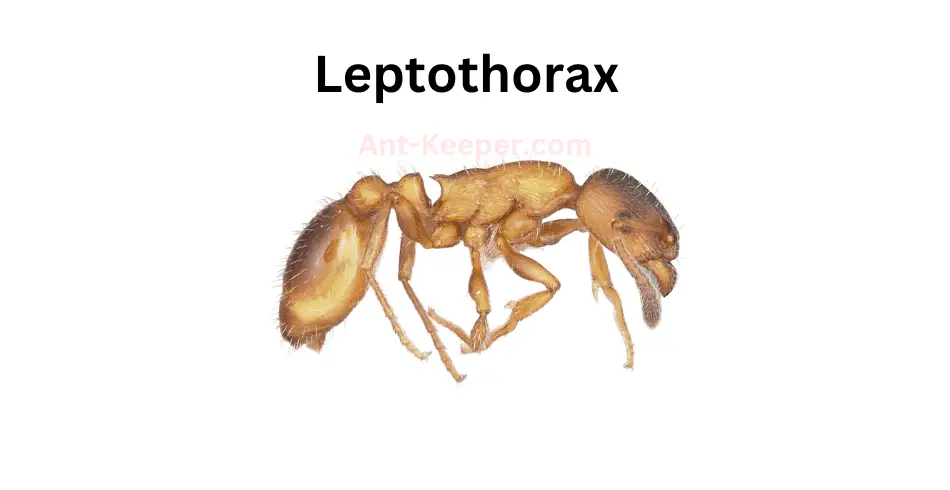
Leptothorax is a genus of ants that belongs to the family Formicidae.
These ants are small in size, measuring between 2 to 4 millimeters in length.
They are commonly found in forests, grasslands, and other natural habitats.
Leptothorax ants are known for their social behavior, as they live in colonies that can range from a few dozen to several hundred individuals.
These ants have a hierarchical social structure, with a queen ant at the top and worker ants at the bottom.
The queen ant is responsible for laying eggs, while the worker ants take care of the young, gather food, and defend the colony from predators.
One interesting feature of Leptothorax ants is their ability to form temporary colonies with other ant species.
This behavior is known as "temporary social parasitism," and it allows Leptothorax ants to benefit from the resources of other ant colonies without having to invest in their own colony infrastructure.
Leptothorax ants are also known for their ability to navigate through complex environments.
They use a combination of visual cues and chemical signals to find their way back to the colony after foraging for food.
Overall, Leptothorax ants are fascinating creatures that play an important role in their ecosystems.
Their social behavior and navigational abilities make them a subject of interest for scientists studying animal behavior and ecology.
21) Linepithema

Linepithema is a genus of ants that belongs to the subfamily Dolichoderinae.
The ants in this genus are small in size, measuring between 1.5 to 3 millimeters in length.
They are known for their ability to form large colonies, which can consist of thousands of individuals.
Linepithema ants are typically found in urban and suburban areas, where they feed on a variety of food sources, including sweets, meats, and fats.
They are also known to feed on the honeydew produced by aphids and other insects.
One of the most interesting aspects of Linepithema ants is their ability to form supercolonies.
These supercolonies can span hundreds of meters and contain millions of individuals.
This is made possible by the ants' ability to recognize and tolerate individuals from other colonies, which allows them to merge and form larger groups.
Despite their small size, Linepithema ants are known for their aggressive behavior.
They will defend their territory and food sources fiercely, often attacking other ants and insects that come too close.
They are also known to be able to adapt quickly to changing environments, which has allowed them to thrive in many different parts of the world.
Overall, Linepithema ants are fascinating creatures that have adapted to life in urban and suburban environments.
Their ability to form supercolonies and adapt quickly to changing conditions has made them a successful and resilient species.
22) Velvety Tree Ants, Liometopum

Velvety Tree Ants, also known as Liometopum occidentale, are a species of ant that belong to the family Formicidae.
These ants are commonly found in forested areas and are known for their unique appearance and behavior.
Velvety Tree Ants are typically black or dark brown in color and have a velvety texture to their bodies.
They are relatively large ants, with workers measuring up to 10mm in length.
These ants are also known for their distinctive mandibles, which are used for cutting and carrying food.
One of the most interesting aspects of Velvety Tree Ants is their nesting behavior.
These ants build large nests in trees, which can be up to several meters in diameter.
The nests are made from a combination of plant material and the ants' own saliva, which creates a strong and durable structure.
Velvety Tree Ants are omnivorous, meaning that they eat both plant and animal matter.
They are known to feed on a variety of insects, as well as honeydew produced by aphids and other insects.
These ants are also known to cultivate fungi within their nests, which they use as a food source.
In terms of their ecological role, Velvety Tree Ants are important predators and scavengers in forest ecosystems.
They help to control populations of other insects and contribute to nutrient cycling by breaking down organic matter.
Overall, Velvety Tree Ants are a fascinating and important species of ant that play an important role in forest ecosystems.
Their unique appearance and behavior make them a popular subject of study for scientists and nature enthusiasts alike.
23) Manica

The Manicabe ant, also known as the scientific name Manica rubida, is a species of ant that belongs to the Formicidae family.
These ants are known for their reddish-brown color and their aggressive behavior towards other ant species.
Manicabe ants are typically found in forested areas and are known to build their nests in soil or under rocks.
They are also known to be highly territorial and will defend their nests aggressively against any intruders.
One interesting behavior of the Manicabe ant is their ability to form large raiding parties.
These raids are typically carried out against other ant species and are known to be highly coordinated and efficient.
The ants will work together to overwhelm their opponents and steal their food and resources.
Manicabe ants are also known for their unique communication system.
They use a combination of chemical signals and physical cues to communicate with each other and coordinate their activities.
This communication system allows them to work together effectively and efficiently, even in large groups.
Overall, the Manicabe ant is a fascinating species that exhibits a wide range of interesting behaviors and adaptations.
Their aggressive nature and unique communication system make them a fascinating subject for scientific study.
24) Harvester Ants, Messor
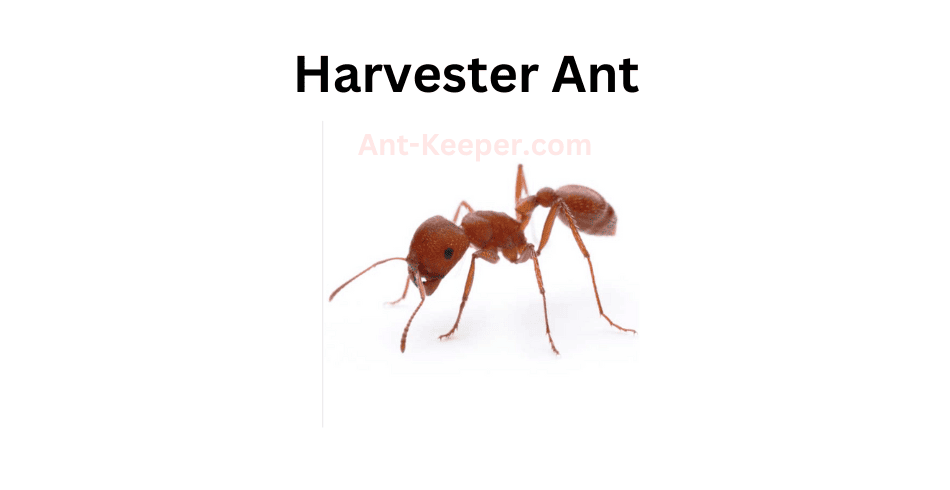
Harvester ants are a type of ant that belongs to the genus Pogonomyrmex.
They are known for their impressive ability to collect and store seeds, which they use as their primary source of food.
These ants are typically found in arid and semi-arid regions, where they play an important role in the ecosystem by dispersing seeds and aerating the soil.
Harvester ants are social insects that live in large colonies, which can contain thousands of individuals.
The colony is typically headed by a queen, who is responsible for laying eggs and maintaining the social structure of the colony.
The workers, which are all female, are responsible for foraging, nest maintenance, and caring for the young.
One of the most impressive features of harvester ants is their ability to navigate long distances to find food.
They use a combination of visual cues and chemical signals to locate and retrieve seeds, which they then bring back to the nest.
Once inside the nest, the seeds are stored in underground chambers, where they are protected from predators and other environmental factors.
Harvester ants are also known for their aggressive behavior, particularly when it comes to defending their nest and food sources.
They have powerful mandibles that they use to bite and sting potential threats, including humans.
As a result, it is important to exercise caution when encountering these ants in the wild.
Overall, harvester ants are fascinating creatures that play an important role in their ecosystem.
Their ability to collect and store seeds, navigate long distances, and defend their colony make them a formidable force in the world of insects.
25) Trailing Pharaoh And Timid Ants, Monomorium

The Trailing Pharaoh ant, also known as the Monomorium pharaonis, is a small, reddish-brown ant species that is commonly found in urban areas.
These ants are known for their ability to form large colonies, which can consist of thousands of individuals.
One interesting behavior of the Trailing Pharaoh ant is their tendency to trail behind other ants.
This behavior is thought to be a form of communication, as the trailing ants are able to follow the scent trail left by the leading ants.
This behavior is also used to locate food sources, as the trailing ants are able to follow the trail to the source of the food.
In contrast to the bold behavior of the Trailing Pharaoh ant, the Timid ant, also known as the Temnothorax species, is a much more cautious species.
These ants are small and brown, and are often found in wooded areas.
They are known for their timid behavior, and will often retreat into their nests when threatened.
Despite their timid nature, the Timid ant is still able to form large colonies.
They are also known for their ability to adapt to changing environments, and can be found in a variety of habitats, including forests, meadows, and even urban areas.
Overall, both the Trailing Pharaoh ant and the Timid ant are fascinating species that demonstrate unique behaviors and adaptations.
By studying these ants, scientists can gain a better understanding of the complex social behaviors and ecological roles of ants in their respective environments.
26) Mite-Eating Ants, Myrmecina

The Mite-Eating Ant, also known as the Pheidole megacephala, is a species of ant that is commonly found in tropical and subtropical regions around the world.
These ants are known for their unique feeding habits, as they primarily feed on mites and other small arthropods.
The Mite-Eating Ant is a relatively small ant, with workers measuring between 2-3mm in length.
They have a distinctive head shape, with a large and elongated head that is almost as wide as their thorax.
Their bodies are typically a reddish-brown color, with darker legs and antennae.
These ants are highly social, living in large colonies that can contain thousands of individuals.
The colonies are typically divided into two groups: workers and reproductive individuals.
The workers are responsible for foraging for food, caring for the young, and defending the colony, while the reproductive individuals are responsible for producing offspring.
One of the most interesting aspects of the Mite-Eating Ant is their feeding habits.
These ants are specialized predators, feeding almost exclusively on mites and other small arthropods.
They use their large mandibles to capture and kill their prey, and then carry it back to the colony to be consumed.
In addition to their unique feeding habits, the Mite-Eating Ant is also known for its ability to adapt to a wide range of environments.
They are able to thrive in both natural and urban environments, and can be found in a variety of habitats, including forests, grasslands, and even in homes and buildings.
Overall, the Mite-Eating Ant is a fascinating species of ant that has adapted to a unique niche in the ecosystem.
Their specialized feeding habits and ability to thrive in a variety of environments make them an important species to study and understand.
27) Furrowed Ants, Myrmica

Furrowed ants, also known as Pheidole ruginoda, are a species of ant that belong to the family Formicidae.
These ants are commonly found in various habitats such as forests, grasslands, and deserts.
They are known for their distinctive appearance, with a furrowed head and thorax, and a smooth and shiny abdomen.
Furrowed ants are social insects that live in colonies, which can range in size from a few hundred to several thousand individuals.
The colony is typically headed by a queen ant, whose primary role is to lay eggs.
The workers, which are sterile females, are responsible for foraging, nest maintenance, and caring for the young.
These ants are omnivorous, meaning they feed on both plant and animal matter.
Their diet consists of seeds, insects, and other small invertebrates.
They are also known to tend to aphids, which produce a sugary substance that the ants feed on.
Furrowed ants are known for their aggressive behavior, and will defend their colony fiercely against intruders.
They have been observed engaging in territorial battles with other ant species, and will even attack larger insects such as grasshoppers and beetles.
Overall, furrowed ants are an important part of many ecosystems, playing a crucial role in seed dispersal and soil aeration.
Their unique appearance and behavior make them a fascinating subject for study and observation.
28) Myrmoxenus

Myrmoxenus is a genus of ants that belongs to the subfamily Myrmicinae.
The ants in this genus are small in size, measuring between 2-4 mm in length.
They are known for their unique behavior of raiding other ant colonies and stealing their brood to raise as their own.
Myrmoxenus ants have a distinctive appearance, with a dark brown or black body and long, slender legs.
They have a narrow waist and a curved thorax, which gives them a distinctive shape.
The antennae of Myrmoxenus ants are long and thin, with 12 segments.
These ants are social insects, living in colonies that can range in size from a few dozen to several hundred individuals.
The colonies are typically polygynous, meaning they have multiple queens.
The queens are responsible for laying eggs, while the workers take care of the brood and forage for food.
Myrmoxenus ants are known for their aggressive behavior towards other ant species.
They will often raid the nests of other ants, overpowering the defenders and stealing their brood.
Once they have captured the brood, they will take it back to their own colony and raise it as their own.
Despite their aggressive behavior, Myrmoxenus ants are not considered pests.
They do not cause damage to structures or crops, and they do not pose a threat to humans.
In fact, they are an important part of the ecosystem, helping to control the populations of other insects.
In conclusion, Myrmoxenus ants are fascinating creatures with unique behavior and a distinctive appearance.
They are an important part of the ecosystem and play a valuable role in controlling insect populations.
29) Oxyopomyrmex

Oxyopomyrmexbe is a species of ant belonging to the family Formicidae.
These ants are known for their unique physical characteristics, including their elongated mandibles and slender bodies.
They are typically found in arid regions and are well adapted to survive in harsh environments.
Oxyopomyrmexbe ants are highly social insects, living in large colonies that can contain thousands of individuals.
They are known for their aggressive behavior and will defend their territory fiercely against other ant species.
These ants are also known to be opportunistic feeders, consuming a wide variety of food sources including insects, seeds, and nectar.
One of the most interesting aspects of Oxyopomyrmexbe ants is their ability to regulate their body temperature.
They are able to do this by adjusting their behavior and moving to different areas of their nest depending on the temperature outside.
This allows them to maintain a stable internal temperature and survive in extreme heat or cold.
Overall, Oxyopomyrmexbe ants are fascinating creatures with unique adaptations that allow them to thrive in challenging environments.
Their social behavior and aggressive nature make them an important part of their ecosystem, and their ability to regulate their body temperature is a testament to their resilience and adaptability.
30) Crazy Ants, Paratrechina

Crazy ants, also known as Nylanderia fulva, are a species of ant that belong to the family Formicidae.
They are small in size, measuring only about 2.2 to 3 mm in length, and are reddish-brown in color.
These ants are known for their erratic and unpredictable behavior, hence the name "crazy ants."
Crazy ants are native to South America, but have since spread to other parts of the world, including North America, Asia, and Australia.
They are highly adaptable and can thrive in a variety of environments, including urban areas, forests, and grasslands.
One of the most notable characteristics of crazy ants is their ability to form large colonies with multiple queens.
This allows them to quickly establish themselves in new areas and outcompete other ant species.
Crazy ants are also known for their aggressive behavior towards other insects and animals, including humans.
In addition to their aggressive behavior, crazy ants are also known for their ability to cause damage to electrical equipment.
They are attracted to electrical currents and can easily short-circuit electronics, causing damage and potentially starting fires.
Despite their small size, crazy ants are a formidable species that can have a significant impact on their environment.
As they continue to spread to new areas, it is important to monitor their behavior and take steps to control their populations in order to minimize their impact on ecosystems and human infrastructure.
31) Big Headed Ants, Pheidole

Big Headed Ants, also known as Pheidole megacephala, are a species of ant that belong to the family Formicidae.
These ants are known for their distinctive large heads, which are used for defense and communication within their colonies.
Big Headed Ants are typically found in tropical and subtropical regions, where they build their nests in soil, leaf litter, and other organic matter.
They are omnivorous, feeding on a variety of insects, seeds, and other small organisms.
One of the most interesting aspects of Big Headed Ants is their social behavior.
They live in large colonies, with a queen ant at the center of the hierarchy.
The queen is responsible for laying eggs, while the other ants in the colony perform various tasks such as foraging for food, caring for the young, and defending the colony from predators.
Big Headed Ants are also known for their ability to displace other ant species in their habitats.
They are aggressive and have been known to attack and kill other ants, as well as compete with them for resources.
Despite their aggressive behavior, Big Headed Ants are not considered a major pest species.
However, their ability to displace other ant species and their potential impact on native ecosystems make them an important species to study and monitor.
32) Restless Ants, Plagiolepis
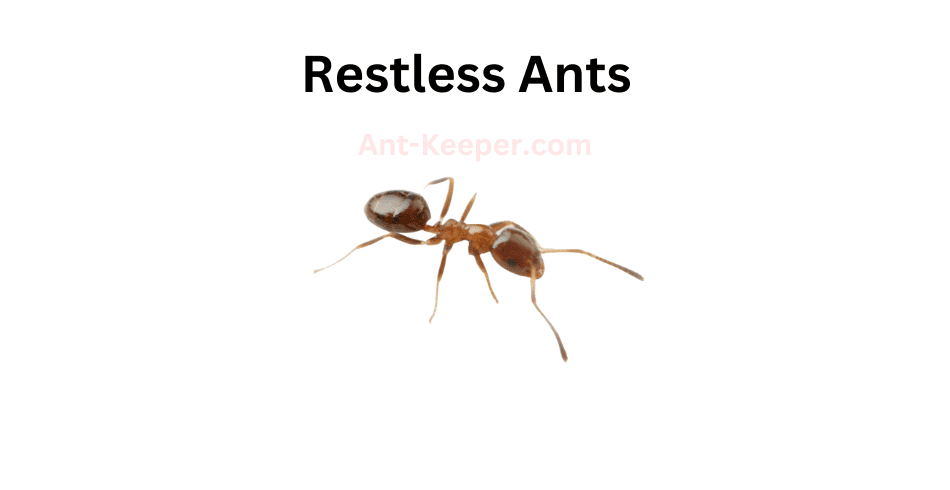
Restless Ants, also known as the Red Ants, are a species of ants that belong to the Formicidae family.
They are known for their highly active and restless behavior, constantly moving around in search of food and resources.
These ants are typically small in size, measuring around 2-3 mm in length.
They have a reddish-brown coloration and a slender body shape, with long legs and antennae.
Restless Ants are social insects, living in large colonies that can contain thousands of individuals.
Restless Ants are omnivorous, feeding on a variety of food sources including insects, fruits, and seeds.
They are also known to scavenge for food, often raiding the nests of other ant species to steal their resources.
One of the most interesting aspects of Restless Ants is their ability to adapt to changing environments.
They are able to quickly adjust their behavior and foraging patterns in response to changes in their surroundings, such as changes in temperature or the availability of food.
Restless Ants are also known for their aggressive behavior, particularly when defending their nests or resources.
They have powerful mandibles that they use to bite and defend themselves against predators or other ants.
Overall, Restless Ants are fascinating creatures that play an important role in their ecosystem.
Their highly active and adaptable behavior makes them a valuable species to study and understand.
33) Amazon Ants, Polyergus

The Amazon Ant, also known as the Polyergus breviceps, is a species of ant that belongs to the Formicidae family.
These ants are known for their unique behavior of raiding other ant colonies and stealing their brood to raise as their own.
The Amazon Ants are typically black or dark brown in color and have a slender body with long legs.
They are relatively small in size, with workers measuring around 4-5 mm in length.
The queen ants are slightly larger, measuring around 7-8 mm in length.
These ants are social insects and live in large colonies that can consist of thousands of individuals.
The colonies are usually divided into different castes, including workers, soldiers, and reproductive ants.
The workers are responsible for foraging, caring for the brood, and maintaining the nest, while the soldiers defend the colony from predators.
One of the most interesting aspects of the Amazon Ants is their unique behavior of raiding other ant colonies.
They do this by sending out a group of specialized workers, known as raiders, to infiltrate the target colony.
The raiders then steal the brood of the target colony and bring it back to their own nest.
Once the stolen brood hatches, the Amazon Ants use it to increase their own workforce.
The Amazon Ants are also known for their symbiotic relationship with a species of butterfly known as the Maculinea rebeli.
The butterfly larvae feed on the brood of the Amazon Ants, but in return, they secrete a substance that makes the ants more aggressive and better at raiding other colonies.
Overall, the Amazon Ants are fascinating creatures with unique behaviors and adaptations that allow them to thrive in their environment.
34) Porthole Ants, Ponera
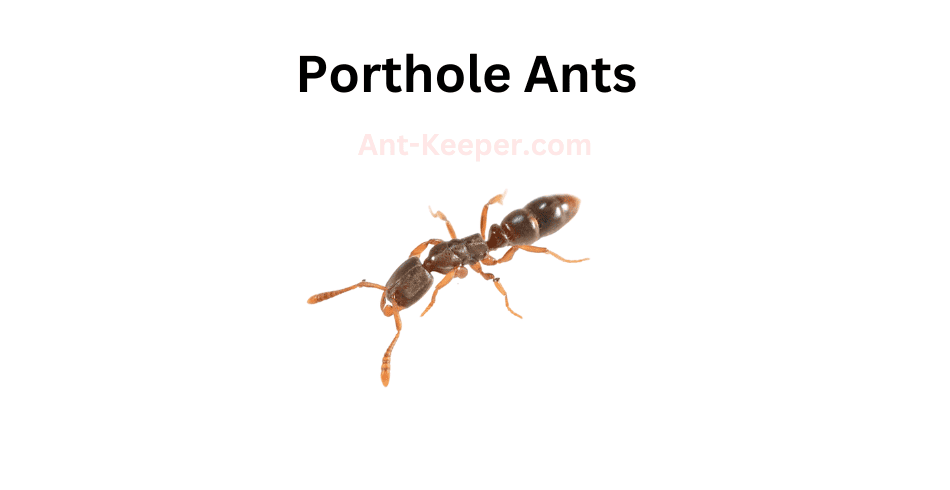
Porthole ants, also known as Temnothorax spp., are a genus of small ants that are commonly found in forested areas.
These ants are known for their unique nesting behavior, as they create their nests in small cavities or "portholes" in trees, rocks, or other natural structures.
Porthole ants are typically less than 5mm in length and have a dark brown or black coloration.
They are social insects and live in colonies that can range from a few dozen to several hundred individuals.
The colonies are typically led by a single queen, who is responsible for laying eggs and maintaining the colony's reproductive population.
One of the most interesting aspects of porthole ants is their nesting behavior.
Unlike many other ant species, porthole ants do not create large underground nests.
Instead, they seek out small cavities in natural structures and use them as their nesting sites.
These cavities can be as small as a few millimeters in diameter and are often located high up in trees or on rocky outcroppings.
Porthole ants are also known for their ability to adapt to changing environmental conditions.
They are able to quickly relocate their nests if their current nesting site becomes unsuitable due to factors such as flooding or predation.
This adaptability allows them to thrive in a variety of habitats, from temperate forests to arid deserts.
Overall, porthole ants are a fascinating and unique species of ant that have adapted to their environment in a variety of ways.
Their nesting behavior and adaptability make them an important species to study for understanding the ecology of forested areas.
35) Winter Ants, Prenolepis

Winter ants, also known as Formica exsectoides, are a species of ant that are commonly found in temperate regions.
These ants are known for their ability to survive harsh winter conditions, which is where they get their name from.
Winter ants are typically black or dark brown in color and can range in size from 4 to 8 millimeters in length.
They are social insects and live in large colonies that can contain thousands of individuals.
These colonies are typically located underground, where the ants construct elaborate tunnels and chambers.
One of the most interesting things about winter ants is their ability to survive the cold winter months.
Unlike many other ant species, winter ants do not hibernate during the winter.
Instead, they have developed a number of adaptations that allow them to survive in the cold.
One of these adaptations is the ability to regulate their body temperature.
Winter ants are able to generate heat by shivering their muscles, which allows them to maintain a temperature of around 25 degrees Celsius even when the outside temperature drops below freezing.
Winter ants also have a unique diet that helps them survive the winter.
They feed on the honeydew produced by aphids, which is a sugary substance that provides them with the energy they need to survive.
Overall, winter ants are a fascinating species of ant that have adapted to survive in some of the harshest conditions on earth.
Their ability to regulate their body temperature and feed on a unique diet make them a truly remarkable species.
36) Hairy Curltail Ants, Proceratium

The Hairy Curltail Ant (Camponotus pilicornis) is a species of ant belonging to the genus Camponotus.
These ants are known for their distinctive hairy appearance, which covers their entire body.
The hairs on their body are long and curly, giving them a unique and striking appearance.
Hairy Curltail Ants are typically found in forested areas, where they build their nests in dead wood or under rocks.
They are known to be highly territorial and will aggressively defend their nests against intruders.
These ants are also known to be omnivorous, feeding on a variety of food sources including insects, nectar, and honeydew.
The Hairy Curltail Ant is a relatively large ant species, with workers measuring between 6-12mm in length.
The queen ant is even larger, measuring up to 15mm in length.
These ants are also known for their strong mandibles, which they use to defend their nests and capture prey.
One interesting aspect of the Hairy Curltail Ant is their ability to communicate with each other through the use of pheromones.
These chemical signals are used to mark trails, identify nestmates, and coordinate foraging activities.
Overall, the Hairy Curltail Ant is a fascinating species of ant with a unique appearance and interesting behaviors.
Their presence in forested areas can have important ecological implications, as they play a role in the ecosystem as both predators and scavengers.
37) Proformica

Proformica is a genus of ants that belongs to the family Formicidae.
These ants are known for their small size and distinctive appearance, with workers measuring between 2-4mm in length.
They are typically black or dark brown in color, with a shiny exoskeleton that is covered in fine hairs.
Proformica ants are found in a variety of habitats, including forests, grasslands, and deserts.
They are known for their ability to adapt to different environments, and can be found in both temperate and tropical regions.
These ants are also highly social, living in large colonies that can contain thousands of individuals.
One of the most interesting aspects of Proformica ants is their behavior.
These ants are known for their aggressive nature, and will defend their colonies fiercely against any perceived threats.
They are also highly organized, with workers dividing up tasks such as foraging, nest building, and caring for the young.
In addition to their social behavior, Proformica ants are also important members of their ecosystems.
They play a key role in controlling the populations of other insects, and are important prey for many larger animals.
Overall, these ants are fascinating creatures that are well worth studying and observing in their natural habitats.
38) Rossomyrmex
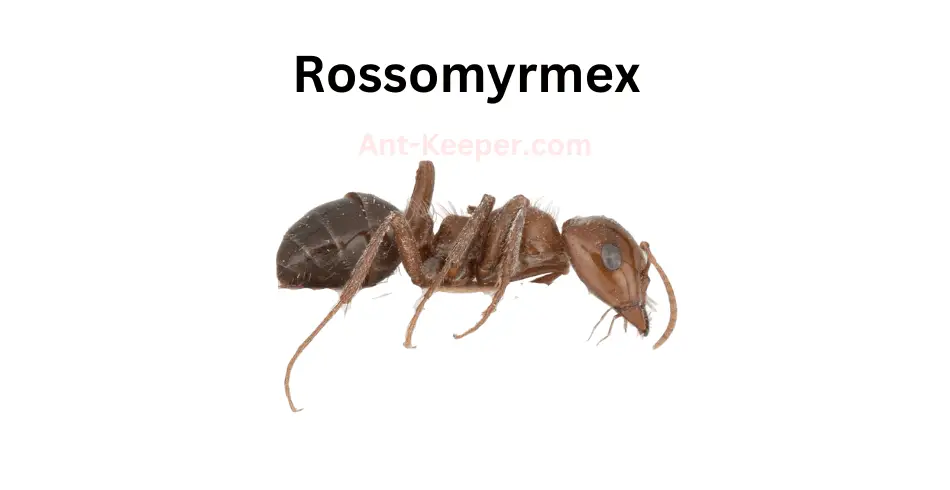
Rossomyrmex is a genus of ants that belongs to the subfamily Myrmicinae.
The ants in this genus are small in size, measuring between 2-4 mm in length.
They are known for their distinctive coloration, which is usually a combination of black and reddish-brown.
Rossomyrmex ants are typically found in arid and semi-arid regions, where they build their nests in sandy or rocky soils.
They are known to be opportunistic feeders, and will consume a variety of food sources including insects, seeds, and nectar.
One interesting characteristic of Rossomyrmex ants is their ability to tolerate high temperatures.
They are able to survive in environments where temperatures can reach up to 50°C, which is much higher than the tolerance level of many other ant species.
Rossomyrmex ants are also known for their aggressive behavior towards other ant species.
They will defend their territory and resources fiercely, often engaging in battles with other ant colonies.
Overall, Rossomyrmex ants are a fascinating group of insects that have adapted to survive in harsh environments.
Their unique coloration, tolerance to high temperatures, and aggressive behavior make them an interesting subject for study and observation.
39) Fire Ants, Solenopsis

Fire ants are a type of ant that belongs to the Solenopsis genus.
They are known for their reddish-brown color and their aggressive behavior.
Fire ants are social insects that live in colonies, which can range in size from a few hundred to several thousand individuals.
Fire ants are omnivorous and feed on a variety of foods, including insects, seeds, and other small animals.
They are also known to scavenge for food and will often invade other ant colonies to steal their resources.
One of the most distinctive features of fire ants is their ability to sting.
They have a stinger located at the end of their abdomen, which they use to inject venom into their prey or enemies.
Fire ant stings can be painful and can cause an allergic reaction in some people.
Fire ants are also known for their ability to build large mounds, which can reach heights of up to 18 inches.
These mounds are made of soil and are used as a nesting site for the colony.
Fire ants are considered to be an invasive species in many parts of the world, as they can cause damage to crops and wildlife.
They are also a nuisance to humans, as their stings can be painful and their mounds can be unsightly.
Overall, fire ants are fascinating insects that have adapted to thrive in a variety of environments.
While they can be a nuisance, they are an important part of the ecosystem and play a vital role in controlling insect populations.
40) Leaf-Litter Ants, Stenamma

Leaf-litter ants are a group of ants that are commonly found in forested areas around the world.
They are known for their ability to live and forage in the leaf litter layer of the forest floor, where they play an important role in nutrient cycling and soil health.
Leaf-litter ants are typically small in size, ranging from 1-5mm in length.
They are often reddish-brown or black in color, and have a slender, elongated body shape.
These ants are social insects, living in colonies that can range in size from a few dozen to several thousand individuals.
One of the key characteristics of leaf-litter ants is their ability to forage for food in the leaf litter layer.
They are known to feed on a variety of organic matter, including dead insects, fungi, and plant material.
Leaf-litter ants are also important decomposers, breaking down organic matter and returning nutrients to the soil.
In addition to their role in nutrient cycling, leaf-litter ants also play an important role in the ecosystem as prey for other animals.
They are a food source for a variety of predators, including birds, reptiles, and other insects.
Overall, leaf-litter ants are an important and fascinating group of insects that play a critical role in maintaining the health and functioning of forest ecosystems around the world.
41) Vampire Ants, Stigmatomma
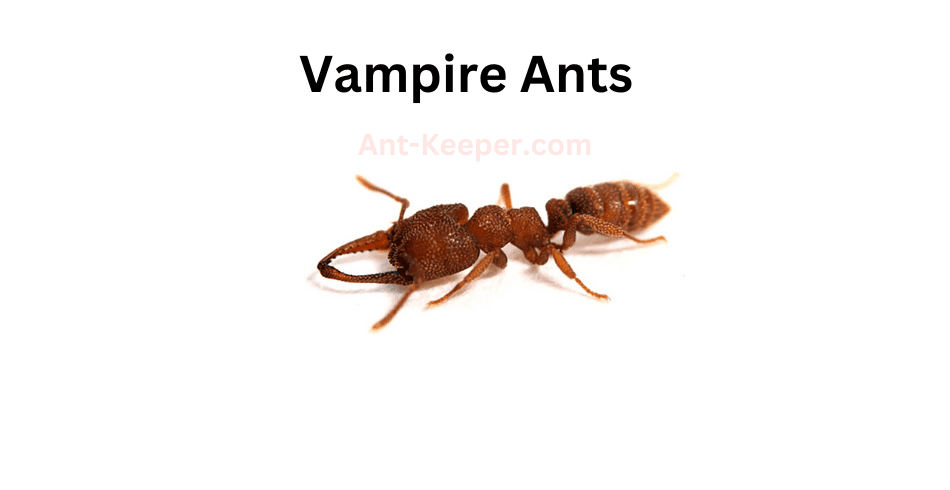
Vampire ants, also known as blood-sucking ants, are a species of ants that feed on the blood of other insects.
These ants are known for their unique feeding behavior, which involves biting into the exoskeleton of their prey and then sucking out their blood.
Vampire ants are typically found in tropical and subtropical regions, where they live in colonies of up to several thousand individuals.
They are known for their aggressive behavior and will attack other insects, including larger prey such as grasshoppers and caterpillars.
One of the most interesting aspects of vampire ants is their ability to adapt to their environment.
In some cases, these ants have been known to feed on the blood of their own colony members when other sources of food are scarce.
Vampire ants are also known for their unique physical characteristics.
They have long, curved mandibles that are used to bite into the exoskeleton of their prey.
They also have specialized mouthparts that allow them to suck out the blood of their victims.
Despite their aggressive behavior and blood-sucking tendencies, vampire ants play an important role in their ecosystem.
They help to control the populations of other insects and contribute to the overall balance of their environment.
Overall, vampire ants are a fascinating species of ants that have adapted to their environment in unique and interesting ways.
Their behavior and physical characteristics make them a subject of interest for scientists and nature enthusiasts alike.
42) Strongylognathus

Strongylognathus is a genus of ants that belongs to the subfamily Myrmicinae.
The ants in this genus are small in size, measuring between 2 to 3 millimeters in length.
They are known for their distinctive mandibles that are long and slender, which they use to capture prey and defend their colony.
The Strongylognathus ants are typically found in forested areas, where they build their nests in soil or leaf litter.
They are known to be highly territorial and aggressive towards other ant species that invade their territory.
The ants in this genus are also known to be omnivorous, feeding on a variety of food sources including insects, nectar, and honeydew.
One of the most interesting features of the Strongylognathus ants is their ability to communicate with each other through the use of pheromones.
These chemical signals are used to mark trails, identify nestmates, and coordinate foraging activities.
The ants in this genus are also known to exhibit a high degree of social organization, with a clear division of labor among the different castes.
Overall, the Strongylognathus ants are fascinating creatures that play an important role in their ecosystem.
Their unique physical and behavioral characteristics make them a subject of interest for scientists and nature enthusiasts alike.
43) Tapinoma

Tapinoma is a genus of ants that belongs to the family Formicidae.
The species Tapinoma is a small ant that measures about 2-3 mm in length.
They are commonly found in urban and suburban areas, and are known to invade homes and buildings in search of food and shelter.
Tapinoma ants are light brown in color and have a slender body with long legs.
They have a distinctively shaped head that is wider than their thorax, and they possess a pair of antennae that are bent at a right angle.
These ants are known for their ability to form large colonies, which can consist of thousands of individuals.
Tapinoma ants are omnivorous and feed on a variety of food sources, including insects, nectar, and honeydew.
They are also known to scavenge for food in garbage cans and other waste areas.
These ants are attracted to sweet and sugary substances, and will often invade kitchens and pantries in search of food.
Tapinoma ants are not known to be aggressive towards humans, but they can become a nuisance when they invade homes and buildings.
They are known to build their nests in wall voids, under floors, and in other hidden areas.
If left unchecked, these ants can cause damage to structures and can contaminate food sources.
Overall, Tapinoma ants are a common pest in many parts of the world.
While they are not harmful to humans, they can be a nuisance when they invade homes and buildings.
Proper pest control measures can help to prevent infestations and keep these ants at bay.
44) Teleutomyrmex

Teleutomyrmex is a genus of ants belonging to the subfamily Myrmicinae.
These ants are known for their unique morphology and behavior.
The workers of Teleutomyrmex are characterized by their elongated mandibles, which are used for capturing and subduing prey.
The mandibles are also used for defense against predators and other ants.
Teleutomyrmex ants are typically found in forested areas, where they forage for small insects and other arthropods.
They are known to be aggressive predators, and will attack and kill other ants and insects that they encounter.
Teleutomyrmex ants are also known to be highly territorial, and will defend their nests against intruders.
The nests of Teleutomyrmex ants are typically located in soil or leaf litter, and are often marked by small mounds of soil or debris.
The nests are usually small, with only a few hundred workers, but can occasionally contain up to a thousand individuals.
Teleutomyrmex ants are not well-studied, and much remains unknown about their biology and behavior.
However, they are believed to play an important role in forest ecosystems, both as predators and as decomposers of organic matter.
Further research is needed to fully understand the ecology and behavior of these fascinating ants.
45) Slave-Making Ants, Temnothorax

The Slave-Making Ants, also known as Dulosis ants, are a group of social insects that engage in a unique behavior of raiding and enslaving other ant colonies.
These ants belong to the subfamily Formicinae and are found in various parts of the world.
The Slave-Making Ants have a complex social structure, with a queen, workers, and soldiers.
The queen is responsible for laying eggs, while the workers and soldiers carry out various tasks such as foraging, nest building, and defense.
However, unlike other ant species, the Slave-Making Ants do not rely solely on their own colony for survival.
Instead, these ants raid nearby colonies of other ant species, using their superior strength and numbers to overpower the defenders.
The Slave-Making Ants then carry off the pupae of the conquered colony back to their own nest.
Once the pupae hatch, they are raised by the Slave-Making Ants and forced to work as slaves for the colony.
The Slave-Making Ants have evolved a number of adaptations to facilitate their slave-raiding behavior.
For example, they have a highly developed sense of smell, which allows them to locate and target specific ant colonies.
They also have strong mandibles and powerful stingers, which they use to subdue their prey.
Despite their aggressive behavior, the Slave-Making Ants play an important role in their ecosystem.
By raiding other ant colonies, they help to control the population of competing ant species.
Additionally, the enslaved ants provide a source of food and labor for the Slave-Making Ants, allowing them to thrive in environments where resources are scarce.
Overall, the Slave-Making Ants are a fascinating and unique species of ant, with a complex social structure and a highly specialized behavior.
While their slave-raiding behavior may seem cruel, it is an important part of their survival strategy and has helped them to thrive in a variety of environments.
46) Pavement Ants, Tetramorium
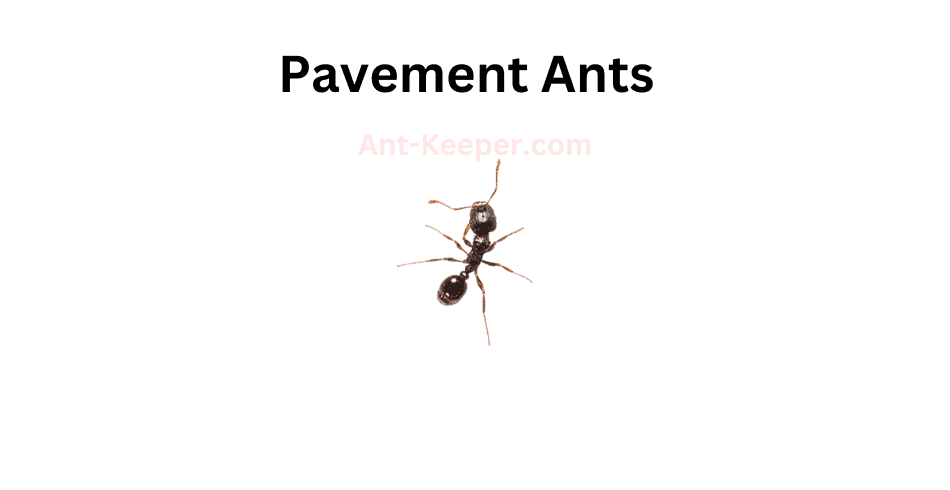
Pavement ants, also known as Tetramorium caespitum, are a species of ant that belong to the family Formicidae.
These ants are commonly found in urban and suburban areas, where they build their nests in cracks and crevices in pavement, sidewalks, and buildings.
Pavement ants are small in size, measuring between 2.5 to 4 mm in length.
They are typically dark brown or black in color, with lighter colored legs and antennae.
These ants are known for their aggressive behavior and will defend their nests fiercely against intruders.
Pavement ants are omnivorous, feeding on a variety of foods including insects, seeds, and sweet substances such as honeydew and nectar.
They are also known to scavenge for food in garbage cans and other waste areas.
Pavement ants are social insects, living in colonies that can range in size from a few hundred to several thousand individuals.
The colony is typically led by a queen ant, who is responsible for laying eggs and maintaining the colony.
Pavement ants are considered a nuisance pest, as they can invade homes and buildings in search of food and shelter.
They are also known to cause damage to pavement and other structures by excavating soil and creating tunnels.
Overall, pavement ants are a common and adaptable species of ant that play an important role in urban ecosystems.
While they may be a nuisance to humans, they are an important food source for many other animals and help to maintain the balance of the ecosystem.
47) Cornfield Ants, Lasius Alienus

Cornfield ants, also known as Lasius neoniger, are a species of ant that belong to the Formicidae family.
These ants are commonly found in agricultural fields and grasslands, where they build their nests in the soil.
They are known for their ability to form large colonies, with thousands of individuals living together in a single nest.
Cornfield ants are small in size, measuring between 2.5 and 4 mm in length.
They are typically black or dark brown in color, with a shiny and smooth exoskeleton.
These ants are omnivorous, feeding on a variety of food sources including insects, seeds, and honeydew produced by aphids.
One of the most interesting aspects of cornfield ants is their ability to form symbiotic relationships with other insects.
They are known to protect and care for aphids, which in turn produce honeydew that the ants feed on.
This relationship benefits both the ants and the aphids, as the ants receive a reliable food source while the aphids are protected from predators.
Cornfield ants are also important for their role in soil health.
Their nests help to aerate the soil and improve its structure, which can benefit plant growth.
Additionally, their foraging activities help to distribute nutrients throughout the soil.
Overall, cornfield ants are an important species in agricultural ecosystems.
Their ability to form large colonies and symbiotic relationships with other insects make them a fascinating subject for study.
48) Furrowed Ants, Myrmica Ruginodis

Furrowed ants, also known as Pheidole ruginoda, are a species of ant that belong to the family Formicidae.
These ants are commonly found in various habitats such as forests, grasslands, and deserts.
They are known for their distinctive appearance, with a furrowed head and thorax, and a smooth and shiny abdomen.
Furrowed ants are social insects that live in colonies, which can range in size from a few hundred to several thousand individuals.
The colony is typically headed by a queen ant, whose primary role is to lay eggs.
The workers, which are sterile females, are responsible for foraging, nest maintenance, and caring for the young.
These ants are omnivorous, meaning they feed on both plant and animal matter.
Their diet consists of seeds, insects, and other small invertebrates.
They are also known to tend to aphids, which produce a sugary substance that the ants feed on.
Furrowed ants are known for their aggressive behavior, and will defend their colony fiercely against intruders.
They have been observed engaging in territorial battles with other ant species, and will even attack larger insects such as grasshoppers and beetles.
Overall, furrowed ants are an important part of many ecosystems, playing a crucial role in seed dispersal and soil aeration.
Their unique appearance and behavior make them a fascinating subject for study and observation.
Check Out Some Of Our Other Ants By Location Posts
| Types Of Ants In Sonora, Mexico | Sonora, Mexico is a region located in the northwestern part of the country, bordering the United States to the north. Known for its diverse landscape, ... |
| Types Of Ants In Guizhou, China | Guizhou, located in the southwestern region of China, is a province known for its diverse and unique environment. The province is characterized by its mountainous ... |
| Types Of Ants In Czech Republic | Nestled in the heart of Central Europe lies the Czech Republic, a landlocked country known for its rich history and stunning natural beauty. The country ... |
| Types Of Ants In Tamaulipas, Mexico | Tamaulipas, a state located in northeastern Mexico, is a region known for its diverse and unique environment. The state is bordered by the Gulf of ... |
| Types Of Ants In Liaoning, China | Liaoning, a province located in the northeastern region of China, boasts a diverse range of natural wonders. From its rugged mountains to its vast plains, ... |
